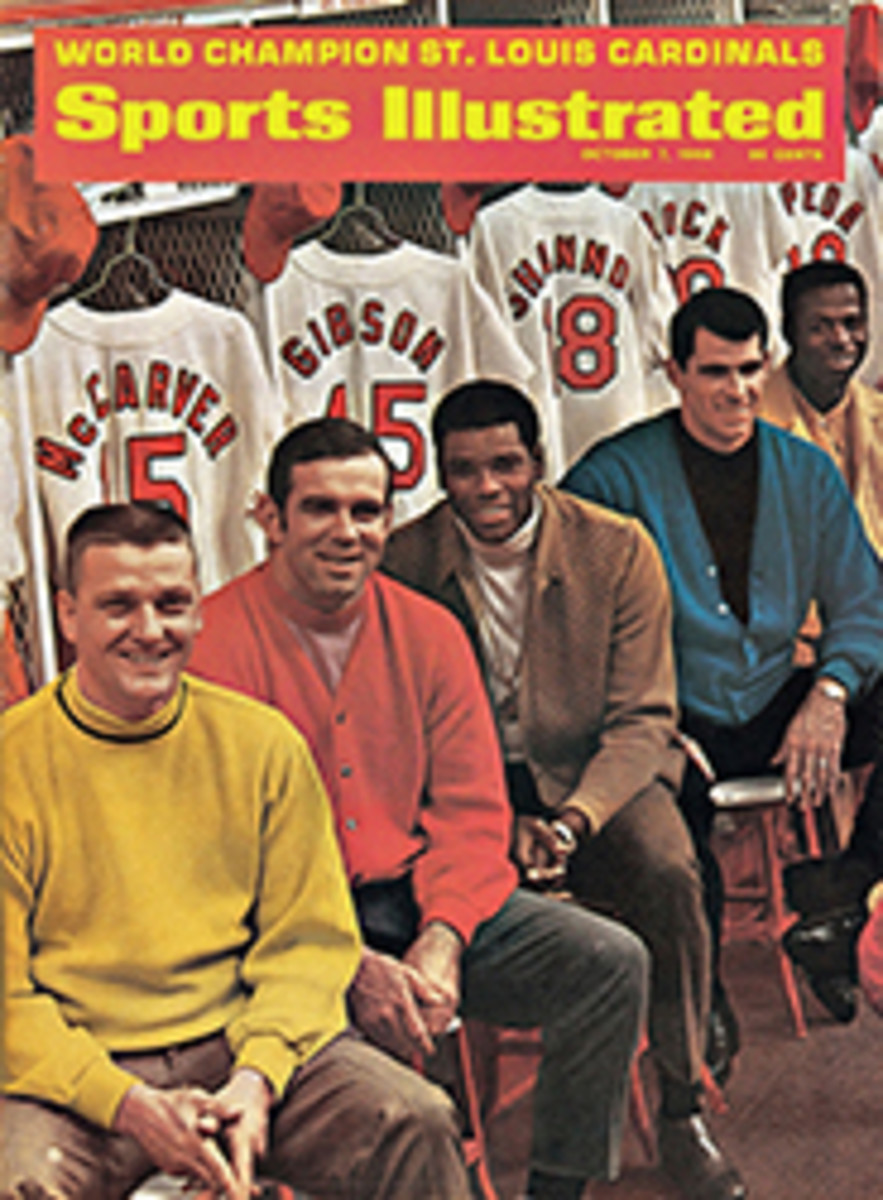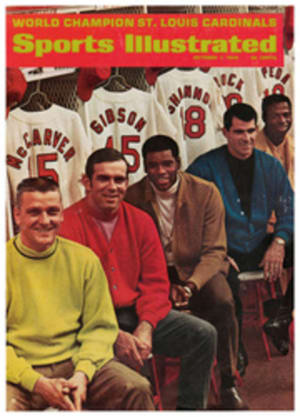
Lower your hems, girls
This week at the Victoria Golf Club in Southeast Australia an athletic event is taking place that is testimony to the perseverance of the female. Called the Women's World Amateur Team Championship, it brings together in ladylike competition 19 teams of the best women golfers from places probable (United States, Great Britain, France) and improbable (China, Bermuda and Argentina).
The wonder is not that so many champions of the game should have traveled so far but that the royal and ancient sport should have ever let women, and most particularly those of the British Empire, attain such a level of competition. To this day Australian golf and sports clubs believe women's competitive instincts should be restricted to rose-growing contests, preferably miles from the club's premises. That women have managed to get their golfing talents into the open anywhere in the Commonwealth is a commentary on the efforts and resolution of one of the most unusual organizations in sport, the Ladies' Golf Union of Great Britain, and its many affiliates. And if the competition at Victoria this week is exciting, it can hardly hold more fascination than the organization that led the march of women into golf.
Though the notion may seem strange to Americans who made ladies' day a fixture of country club life, there remains, still, in golf clubs in Britain and throughout the Commonwealth a rigid code forbidding women in clubhouses. The foremost example is the Royal and Ancient Club at St. Andrews. Women golfers are not permitted inside its hallowed rooms, but—perhaps because Mary Queen of Scots established herself as something of a swinger when she tried the game on the St. Andrews links in 1563—women are allowed to play the Old Course. However, unless they happen to belong to a women's club in the vicinity, the only washing-up facility is St. Andrews Bay. When the British Women's Amateur was held at the course in 1965 the women ran their tournament from a caravan—without heat or light—parked behind the 18th green.
Not surprisingly Britain's lady golfers are a self-sufficient lot. Sensing that in union there is strength, they formed in 1893 the Ladies' Golf Union to administer their sport. This formidable, staunchly girl-guide group operates apart from the Royal and Ancient and has widespread control of its sport. The LGU cherishes the responsibilities of Empire. It is its Australian affiliate that is playing host to the World Amateur. It establishes handicaps for lady golfers in Malawi, New Delhi and Bahrein and it supplies letters of introduction for travelers to golf clubs in Ghana or Pakistan or Rhodesia.
The LGU's sense of propriety is almost Victorian. The British team, playing in the World Amateur, will stop for a match in Kenya on its way back from Australia. "The girls have been told to lengthen their skirts before appearing there," an LGU official noted. "They have been wearing miniskirts, and this would hardly set a good example for the natives."
The character of the LGU is perhaps best suggested by the names of some present and past members: Mrs. E. Side-bottom, Popsie Kenyon-Stow, Auntie and Niecey Trywhitt-Drake, Mrs. Sutherland Pilch.... And the LGU is personified in Miss Doris Chambers, its 83-year-old public relations director. Recently Miss Chambers, an advocate of bracing country walks, fell while jumping over a stile, cracking a vertebra. This has slowed her down, but in the best of times she could never have been accused of believing in the hard-sell approach to public relations. When asked for information about the LGU over the telephone, Miss Chambers has been known to say, "I'll have to think and send you a line."
Seventy-five years ago the LGU approved a set of rules for women, and probably just in time. When ladies seriously took up the game at Westward Ho! in Surrey in the 1860s, male club members ruled that the only club "on any account" the ladies would be permitted to use was a putter. Until the LGU moved in, the ladies had been forced to play a rather haphazard game, the only thing uniform about it being their dress. They wore red coats, perhaps for the same reason that hunters wear red.
"I remember the tournaments before the Kaiser War as wonderful holidays," says Charlotte Cecilia Pitcairn Leitch, who won 12 national titles (the first in 1912) and who, at 77, still plays golf in the 70s with hickory-shaft clubs. "I used to take a house when I went to a championship. There were concerts and full-dress balls. In the old days you knew all of the 166 competitors. Every one of them could be your friend, but now some of the girls playing in these championships don't even wash. We sent a team out to New Zealand a few years ago and got a report back that one girl wore the same white shirt every day. It was filthy."
With time, the tone and quality of ladies' golf began to change in Great Britain. Increasingly, LGU officials, as they huddled in their furs (some brought hot-water bottles as well) in the starter's box on the 1st tee, were to remark at the difference in the new players who were taking up the game. By the 1950s the "welfare-state children" were competing for LGU titles. "Everything has been put in their laps," a former LGU chairman commented not long ago. "They think they should have international honors without making an effort. Success goes to the heads of these lower-class girls. They are just like movie stars."
One of the successful golfers of this new breed was an Irish player named Philomena Garvey. She won the British championship in 1957, and the LGU was hardly pleased. "They'd never had to deal with anyone of her class before," another Irish golfer explains. "Phil was from a very humble family and they didn't know what to do with her." It has been suggested that the LGU went so far as to plot a way to get Miss Garvey off the 1958 Curtis Cup team. The LGU denies any scheming, but the fact is that it suddenly changed the badge that Cup golfers must wear from the traditional one—which included the rose of England, the leek of Wales, the thistle of Scotland and the shamrock of Ireland—to the Union Jack. Miss Garvey was a Republic of Ireland player, and she naturally refused to compete wearing any such detestable symbol, and thus was dropped from the team. Many months later, after receiving widespread criticism, the LGU restored the old badge and Miss Garvey played on the 1960 team.
To change its public image, which was died-in-the-tweed conservative, the LGU began retiring some of its old officials. There was, for instance, the case of "Ma" Beddows, 80, who played on her county golf team until last year. She did not compete in this year's Scottish championship because she felt her game was off at the time, but she is making plans to challenge again in 1969. Ma played for years for Britain on international teams and, when she got to be 62 or so, someone suggested she might retire. She burst into tears but eventually consented. Not long afterward, she broke down in emotion on the 1st tee of a championship in England. This would be the last time she would represent Britain, she sobbed. Her opponent in the match tried unsuccessfully to comfort her. Ma Beddows won the match. The scene was repeated several times and Ma, having put the competition off its game, won each match. Only then did the young golfers' hearts harden to the fact that tears can be as useful as a firm midiron to the pin.
There have been other occasions when youth has had a hard time understanding the wisdom of old LGU types. A few years ago, perhaps to chip away at the generation gap, the LGU hired as its secretary a 53-year-old Australian, Miss Katherine Hannay. Miss Hannay is a bluff, affable, white-haired lady and a former Queensland champion. She taught herself to play golf on her father's sheep station, using a full-length mirror and a Byron Nelson instructional book. During the war she headed a staff of 1,000 that fed 15,000 troops stationed in Sydney, and this experience serves her well in handling the skirmishes between the LGU and the young golfers.
One of these concerned the Curtis Cup uniforms two years ago. The team, when it returned from America, met with LGU officials at Sunningdale and respectfully requested that the union pay for the uniforms they had worn in the matches. An LGU director declared that the suggestion of the players was "absolutely Bolshevik." Finally, a compromise settlement was reached.
There are still some LGU officials who believe a woman golfer is no good once she marries. "They are never the same," one grande dame remarked before last June's Curtis Cup matches, but so harsh an attitude was perhaps understandable. The LGU had been forced to drop five players from the team that went to the previous cup because they had put sex before golf. Two had recently had babies, another expected one, a fourth had just been married and the fifth was engaged and had lost almost 30 pounds to please her beau. The LGU noted that her vanishing bulk had ruined her follow-through.
The Australian LGU is a formidable organization with similar attitudes and problems as its British counterpart. Of the major sports clubs in Melbourne, only six or so accept women as full members. In many places they are barred. A huge section of the 100,000-seat Melbourne Cricket Club stadium, site of the 1956 Olympics, is off limits to women and children. Elsewhere, women may have to use the backstairs entrance to clubs—even Victoria has its segregated entrance marked ASSOCIATE MEMBERS.
But in this situation, with the fine example of Great Britain's LGU to guide it, the Australian women are fighting back. Not only are they using the prestigious Victoria Club for the World Amateur, they are even going to have a dinner at neighboring Royal Melbourne this week before play begins, a party inside the clubhouse. And near Brisbane there is an even more stunning development taking place. The golfing ladies are opening a women-only club there.
Who needs St. Andrews?
PHOTO
SECRETARY HANNAY BRIDGES THE GAP

